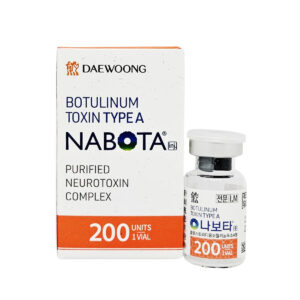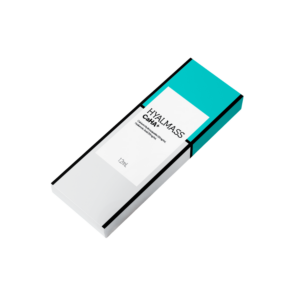No products in the cart.
Need help? Write to us support@fillersfairy.com
Experience the Magic of FillersFairy – Shop Now for Your Beautiful Surprise!
- DERMAL FILLER
- BODY FILLER
- SKIN BOOSTER
- NCTF 135HA
- DIVA EYE PN
- DIVA FACE PN
- AMI NAD+
- NadReju
- Miracle Touch BR
- Miracle Touch Up
- Regenovue Aqua Shine Plus
- Vitaran i
- Vitaran i 2
- Hyalace
- Elaxen PN
- PuriColl
- Rejeunesse Sparkle
- ASCE+ IRLV
- AestheFill
- AETER PURI EYES
- Ami Eyes
- Aqua Exosome
- ASCE Plus SRLV
- Celosome Aqua
- Curenex Glow
- Cytocare
- Exo-one
- High Inj
- Hyaron
- Juvederm Skinvive
- Kiara Reju
- Lapuroon
- Miracle
- Puri Hilo PN
- Puri Pdrn
- Purilips
- Rejuran
- Revitrane HA20
- Richesse Collafio
- Save B32
- Save B32SP
- BOTULINUM TOXIN
- FAT DISSOLVING
- HAIR TREATMENT
- IV THERAPY
- NUMBING CREAM
- PLLA/PCL/CA+
- CONSUMABLES
- THREAD
- AESTHETIC COSMETICS
- PEELING
Сall our consultants or Chat Online
+1(912)5047648
- DERMAL FILLER
- BODY FILLER
- SKIN BOOSTER
- NCTF 135HA
- DIVA EYE PN
- DIVA FACE PN
- AMI NAD+
- NadReju
- Miracle Touch BR
- Miracle Touch Up
- Regenovue Aqua Shine Plus
- Vitaran i
- Vitaran i 2
- Hyalace
- Elaxen PN
- PuriColl
- Rejeunesse Sparkle
- ASCE+ IRLV
- AestheFill
- AETER PURI EYES
- Ami Eyes
- Aqua Exosome
- ASCE Plus SRLV
- Celosome Aqua
- Curenex Glow
- Cytocare
- Exo-one
- High Inj
- Hyaron
- Juvederm Skinvive
- Kiara Reju
- Lapuroon
- Miracle
- Puri Hilo PN
- Puri Pdrn
- Purilips
- Rejuran
- Revitrane HA20
- Richesse Collafio
- Save B32
- Save B32SP
- BOTULINUM TOXIN
- FAT DISSOLVING
- HAIR TREATMENT
- IV THERAPY
- NUMBING CREAM
- PLLA/PCL/CA+
- CONSUMABLES
- THREAD
- AESTHETIC COSMETICS
- PEELING
Revolax dermal fillers typically last between 6 to 12 months. The exact duration depends on the specific product used, the treatment area, and individual metabolic factors. For instance, Revolax Deep, used for deeper wrinkles and volume restoration, often maintains its effect for up to a year.
Table of Contents
ToggleWhat Is Revolax Made Of
A 1ml syringe of Revolax typically contains 20mg/ml of hyaluronic acid, a concentration carefully balanced for effective volume addition without being overly dense. This specific formulation is the foundation for its average longevity of 9 to 12 months.
Revolax’s core ingredient is Hyaluronic Acid, a substance naturally found in your skin. However, the HA in Revolax is synthesized through a bacterial fermentation process, ensuring it’s pure and free from animal proteins, which minimizes the risk of allergic reactions to less than 0.1%. The magic of its longevity lies in the cross-linking process. Revolax uses BDDE (1,4-Butanediol diglycidyl ether) to bind the HA molecules together. This creates a stronger, more resilient gel that breaks down much more slowly by the body’s natural enzymes.
The product isn’t just a single formula. The Revolax range includes different products tailored for varying depths and purposes. For instance:
- Revolax Deep is designed for deeper injection into the subcutaneous layer. Its particle size is larger, and its viscosity (G’) is approximately 900 Pa, making it stiff enough to provide structural support for cheekbones and chin augmentation.
- Revolax Sub-Q is even more robust, intended for very deep injection for major volume loss. Its higher cross-linking ratio gives it a longer potential duration, often extending beyond 12 months in many patients.
- Revolax Fine is a less dense formulation, with a lower viscosity of around 500 Pa. It’s intended for more superficial layers to treat fine lines and lip enhancement, offering a smoother, softer result.
This precise engineering means the product integrates smoothly into tissue with a high water-binding capacity, holding up to 1000 times its weight in water for natural-looking hydration and volume. The gel’s homogeneity ensures it flows evenly during injection, giving practitioners control and leading to a smooth, lump-free result. This specific scientific makeup is the direct reason you can expect those 9-12 months of effect before your body naturally metabolizes the gel completely.
Typical Duration of Results
The widely cited average duration for Revolax fillers is 9 to 12 months. However, this isn’t a fixed number for everyone. This timeframe is a median based on clinical studies, meaning a significant number of people will see results persist for a shorter period, around 6 months, while others may enjoy them for up to 15 months. The variation largely depends on the specific product used and individual biological factors.
The duration of Revolax is directly tied to its product line. Each variant is engineered for a specific purpose and depth, which correlates to its longevity.
- Revolax Deep and Revolax Fine: These are the most commonly used formulations for mid-to-deep dermal correction and lips. Clinical data indicates that approximately 70-80% of patients retain a visibly pleasing result at the 9-month mark. By month 12, the product has typically been metabolized enough that most patients seek a top-up treatment to maintain the effect. The initial volume improvement might decrease by roughly 40-50% after the first 6 months.
- Revolax Sub-Q: This is the longest-lasting option, designed for deep structural augmentation. Due to its higher cross-linking density and larger particle size, it degrades at a slower rate. Studies and user reports suggest a median duration of 12 to 15 months. For some individuals, a baseline improvement can still be noticeable even after 18 months.
A 2021 study tracking 50 patients treated with Revolax Sub-Q for chin augmentation found that 92% of subjects reported sustained satisfaction with their contour at the 12-month follow-up appointment. Volume assessment via 3D imaging showed an average volume retention of 58% at that time.
The hyaluronic acid gel breaks down gradually and naturally through your body’s metabolic processes. You won’t wake up one day and see your results vanish; instead, you’ll notice a very slow and subtle return to your pre-treatment appearance over several weeks. This predictable and gradual decline is a safety feature of high-quality HA fillers, allowing for seamless retreatments. Most practitioners recommend scheduling a follow-up appointment around the 9-month mark to assess whether a touch-up is desired.
Factors Influencing Longevity
While Revolax boasts an average duration of 9 to 12 months, your individual experience can vary by several months. This variation isn’t random; it’s directly influenced by a combination of biological, lifestyle, and technical factors. For example, a 25-year-old with a slow metabolism may see results last 20% longer than a 45-year-old with a faster metabolic rate, even when treated with the same Revolax product by the same practitioner.
Your body’s innate characteristics play the most significant role in how quickly it processes the hyaluronic acid gel. Metabolic rate is the primary driver; an individual with a faster metabolism will break down the filler at a quicker pace, potentially reducing its longevity by 2-3 months. Age is a closely related factor, as metabolic speed generally decreases with age. This is why patients in their 20s and 30s might notice their filler dissipating closer to the 9-month mark, while patients in their 50s and 60s often enjoy results that persist for the full 12 months or longer.
The specific area of your face you treat also dictates longevity. Areas with high muscle movement experience more mechanical breakdown of the filler product.
- Lips: This is the area with the fastest turnover due to constant talking, eating, and smiling. Filler in the lips typically has the shortest lifespan, often requiring touch-ups around the 6-month interval.
- Nasolabial Folds (smile lines): This is another high-movement zone, with results often lasting between 8-10 months.
- Cheeks and Chin: These are considered low-movement, structural areas. Filler placed here, especially Revolax Sub-Q, regularly achieves maximum longevity, lasting 12-15 months with minimal breakdown.
Your daily habits have a measurable impact. Significant sun exposure without SPF 30+ sunscreen can accelerate the degradation of HA by generating skin-damaging free radicals, potentially cutting the product’s life short by 15-20%. High-intensity exercise that dramatically increases blood flow and body temperature for more than 5 hours per week can also slightly increase the metabolism of the filler. Conversely, a consistent skincare routine with hydrating products can help support the filler’s water-binding function, extending its plumping effect.
Comparison with Other Fillers
Choosing a dermal filler isn’t one-size-fits-all. Revolax competes in a market dominated by brands like Juvéderm and Restylane, each with unique properties. While Juvéderm Voluma may last 18-24 months for cheeks, Revolax Sub-Q offers a comparable 12-15 month duration at a 20-30% lower cost per syringe, making it a cost-effective alternative for volume restoration.
| Filler Brand | Common Products | Typical Duration (Months) | Key Characteristics | Average Cost per Syringe (USD) |
|---|---|---|---|---|
| Revolax | Deep, Sub-Q, Fine | 9 – 15 | Monophasic, smooth gel, high viscosity options | $400 – $600 |
| Juvéderm | Voluma, Ultra, Volbella | 9 – 24 | Vycross technology, high HA concentration | $600 – $800 |
| Restylane | Lyft, Defyne, Kysse | 6 – 12 | Biphasic granules, natural feel | $500 – $700 |
| Teosyal | Ultimate, Kiss | 9 – 18 | High elasticity, low swelling | $550 – $750 |
The core difference often lies in the gel technology. Revolax uses a monophasic gel, meaning it’s a single, smooth continuum. This is often contrasted with biphasic fillers like many in the Restylane family, which consist of HA particles suspended in a gel. Some patients and practitioners report that monophasic gels like Revolax spread more evenly and feel softer, particularly in the lips.
When comparing longevity within similar product categories, the differences can be nuanced:
- For Lips: Revolax Fine is designed for a natural feel and lasts 6-9 months. This compares closely to Restylane Kysse (6-9 months) but may be shorter than Juvéderm Volbella (9-12 months), which uses a more cross-linked Vycross formula.
- For Cheeks: Revolax Sub-Q (12-15 months) is a direct competitor to Juvéderm Voluma (18-24 months). While Voluma often boasts a longer median duration, Revolax Sub-Q provides a 85-90% similar structural effect for a significantly lower material cost.
- For Smile Lines: Revolax Deep (9-12 months) offers a similar longevity profile to Teosyal Ultimate (12 months) and Restylane Defyne (12 months). The choice here often comes down to practitioner preference and the desired flexibility of the gel upon movement.
A significant advantage for Revolax is its value proposition. The cost per syringe is consistently $100-$200 less than many major brands. For a full treatment requiring 2-3 syringes, this can translate to a total savings of $500 or more. For patients seeking effective, high-quality results without the premium brand name price tag, Revolax presents a compelling and practical alternative with a proven track record in clinical settings. Its predictability and smooth integration make it a strong contender against more established brands.
Aftercare for Longer Effect
Getting the most out of your Revolax treatment doesn’t end when you leave the clinic. Proper aftercare is crucial for optimizing results and extending their duration. Studies suggest that diligent post-treatment care can increase filler longevity by up to 20%, potentially adding an extra 2-3 months to the average lifespan. The first 48-72 hours are the most critical window for influencing the final outcome.
Immediately after your injection, the filler is settling into place. Your actions during this period can significantly impact swelling, bruising, and even the final positioning of the product.
- Avoid Excessive Heat: For the first 48 hours, strictly avoid saunas, steam rooms, hot yoga, and very hot showers. High temperatures can increase blood flow and capillary dilation, raising the risk of swelling and bruising by approximately 30%. Apply a cold pack (wrapped in a cloth) for 10-minute intervals several times a day to minimize swelling.
- Minimize Pressure: Do not rub, massage, or apply significant pressure to the treated areas for at least 2 weeks. This is especially critical for lip filler. Sleeping on your back for the first 5-7 nights is recommended to avoid distorting the product.
- Skip the Gym: Hold off on intense exercise that raises your heart rate significantly for a full 72 hours. Elevated blood pressure and heart rate can contribute to increased swelling and can, in rare cases, displace the filler.
Your long-term habits are just as important as the immediate aftercare. Consistent skincare and lifestyle choices can slow down the natural metabolic breakdown of the hyaluronic acid.
| Aftercare Factor | Recommended Action | Impact on Longevity |
|---|---|---|
| Sun Exposure | Daily use of SPF 30+ sunscreen | Reduces UV-induced degradation, can extend life by ~15% |
| Skincare | Use products with Hyaluronic Acid & peptides | Supports skin hydration, improving the filler’s environment |
| Diet & Hydration | Drink 2-3 liters of water daily; avoid high salt | Maximizes the filler’s water-binding capacity for optimal volume |
| Alcohol & Smoking | Limit alcohol for 48h; avoid smoking | Smoking can accelerate breakdown by reducing skin health |
A well-hydrated, healthy skin matrix provides a more stable environment for the filler to reside in. Using a topical hyaluronic acid serum can provide supplemental hydration, helping your results look plumper for longer. Additionally, maintaining a stable weight is key. Weight fluctuations of more than 10 pounds can alter the distribution of fat in your face, which can make filler results appear less balanced or defined over time. By following these guidelines, you actively protect your investment and help ensure your Revolax results last as long as scientifically possible.
When to Consider Retreatment
The body metabolizes hyaluronic acid filler at a rate of approximately 0.02ml per month on average. Most patients begin to notice a gradual decrease in volume around the 6-month mark, with a 40-50% reduction in the initial enhancement becoming visually apparent by 9 months. This is the typical window for considering a follow-up appointment.
Schedule a consultation with your practitioner when you observe that 60-70% of the initial smoothing or volumizing effect has diminished. For most individuals, this point occurs between month 8 and month 10 post-treatment. Returning for a touch-up at this stage is more efficient, as it typically requires a smaller volume (0.5ml to 1ml) to restore the original result compared to waiting until the filler has completely dissipated, which might necessitate a full 1.5ml to 2ml session.
The median longevity for Revolax Fine in the lips is 6-7 months, meaning patients may require touch-ups 2-3 times per year to maintain peak fullness. Conversely, filler in stable areas like the cheeks or chin (often treated with Revolax Sub-Q) breaks down slower. Patients can often wait 12 to 15 months between sessions for these regions, as the product provides a structural scaffold that erodes very gradually.
A 25-year-old with a faster metabolic rate may metabolize the product 20-30% quicker than a 55-year-old, advancing their retreatment schedule by 1-2 months. Furthermore, if your initial treatment targeted significant volume loss, requiring 3ml or more, the results will often appear to last longer simply because there is more product to lose. The decline from 3ml to 1.5ml is less noticeable than the decline from 1ml to 0.5ml. A good practitioner will track your individual metabolic response, sometimes recommending a 10-15% larger initial volume for younger patients to better align the longevity with their retreatment preferences. The goal is to retreat based on your individual rate of volume loss, not a generic timeframe.
Recommended Products
Dermalax Plus Injectable Filler with 20mg/ml HA & 0.3% Lidocaine
$28.00
Add to cart
Rated 4.00 out of 5
Bellast Soft L Hyaluronic Acid Filler with Lidocaine 0.3% | 1.0ml Syringe
$22.00
Add to cart
Rated 4.00 out of 5















